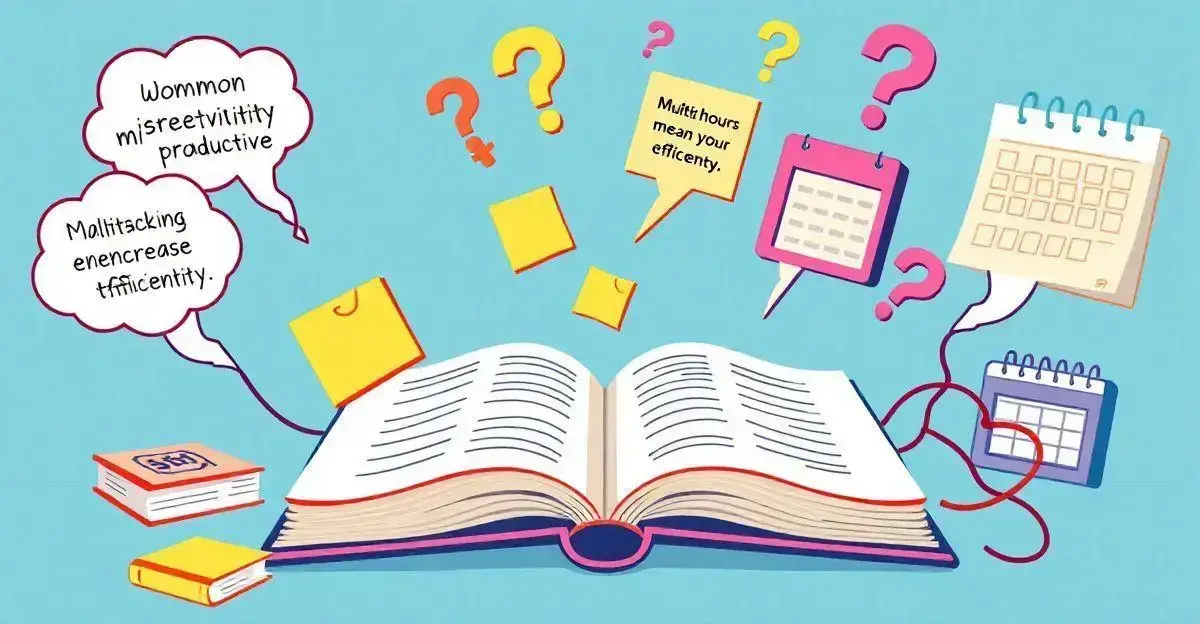When it comes to personal effectiveness, the best books about productivity can be game-changers.
These literary gems offer invaluable insights and practical strategies that can help you streamline your tasks, enhance your efficiency, and ultimately lead you to success.
In this article, we’ll delve into the importance of reading for productivity, present our top picks, and guide you on how to implement their teachings in your daily routine.
The Importance of Productivity in Daily Life
The importance of productivity in daily life cannot be overstated. Being productive means effectively managing your time and tasks, which can lead to achieving personal goals and enhancing work performance.
Benefits of productivity include:
- Reduce stress and gain more time for family, hobbies, and self-care.
- Greater job satisfaction and a sense of achievement.
- Cultivating a healthier, more balanced lifestyle.
Mental well-being: Productivity influences our mental well-being. A clutter-free work environment and structured routines can enhance focus and concentration, leading to better results.

How to Implement Lessons from Productivity Books
Implementing lessons from productivity books can transform your daily routine. Start by identifying key takeaways from each book. Write down practical techniques and strategies that resonate with you.
Next, create a daily plan that includes these techniques. For example, if a book emphasizes time blocking, schedule specific periods for focused work. This helps you stay disciplined and organized.
Another effective practice is to share what you learn with friends or colleagues. Discussing ideas can enhance understanding and create accountability.
Additionally, monitor your progress. Keep a journal to track your productivity levels and adjust your strategies as necessary. It is important to reflect on what works and what doesn’t.
Lastly, be patient. Changes won’t happen overnight. Consistently applying lessons from these books will gradually improve your productivity and efficiency.
Success Stories: Transformational Change Through Books

Success stories of individuals and organizations illustrate how productivity books can lead to meaningful change. One notable example is Tim Ferriss, the author of “The 4-Hour Workweek.”
He implemented the principles of this book to streamline his work and maximize his productivity. By applying the 80/20 rule, he focused on the most impactful tasks, resulting in a significant increase in his output.
Another inspiring story is that of Marie Kondo, known for “The Life-Changing Magic of Tidying Up.” Her methods emphasize decluttering not just physical spaces, but also mental ones.
Many readers have reported a transformation in their productivity levels by adopting her organizational techniques.
Additionally, businesses use lessons from productivity literature to enhance team performance. Companies like Google and Intel apply principles from these books to improve teamwork and overall efficiency, proving that these insights can lead to real-world success.
These examples show the power of applying what you learn from productivity books to achieve remarkable results in both personal and professional life.
Creating a Personal Reading List for Productivity
Creating a personal reading list for productivity involves choosing books that will have the greatest impact on your effectiveness. Start by identifying your goals. Are you looking to manage time better, enhance focus, or develop new habits? This will guide your selections.
Next, explore various productivity-focused genres. Consider books on time management, habit formation, and self-discipline. You can also include books that share real-life success stories to inspire you further.
Once you’ve identified potential reads, prioritize them based on your immediate needs. Create a schedule for reading, aiming for consistent progress. Reviewing key concepts regularly will help reinforce what you’ve learned.
Additionally, don’t hesitate to adjust your list as you grow. Your interests and needs may evolve, and it’s important to adapt. Engaging with other readers can also provide fresh recommendations and insights.
By actively curating your reading list, you’ll be well-equipped to apply valuable lessons that can significantly enhance your productivity.
Common Misconceptions about Productivity Literature

Many people have misconceptions about productivity literature that can hinder their motivation to read or apply its lessons. One common myth is that these books only provide motivational quotes and no practical advice.
In reality, most productivity books include actionable strategies that help readers implement changes in their lives.
Another misconception is that productivity books are only for business professionals. However, these books offer valuable insights applicable to anyone, whether you are a student, homemaker, or artist. Readers from various backgrounds can benefit.
Some individuals believe they must follow every technique from a book to succeed. It’s essential to recognize that each person is unique, and what works for one may not work for another.
Embrace strategies that resonate with you and adapt them to fit your lifestyle.
Lastly, there is a notion that reading productivity books alone will lead to transformation. Success requires consistent action and practice of the principles learned, not just reading.
How to Stay Motivated While Reading Productivity Books
Staying motivated while reading productivity books can be tough when progress feels slow. Set small, clear goals to track your reading, like finishing a chapter per day. This helps create a sense of momentum and accomplishment.
Relating book lessons to your everyday tasks keeps the material relevant. Ask yourself how each tip could apply to your routine. That simple shift turns theory into action and boosts your engagement with the content.
Join online forums or reading groups focused on productivity topics. Sharing insights and challenges with others keeps the experience fresh. Plus, you’ll pick up new strategies and stay encouraged by peer progress.
Digital vs. Physical Books: What’s Better for Productivity Learning?
Both digital and physical books offer unique advantages for productivity learning. Physical books help you focus better by minimizing distractions from devices. They also allow a deeper connection through highlighting and notes.
Digital books are great for portability and quick access anytime, anywhere. Features like search, bookmarks, and syncing across devices make them highly practical. You can read during short breaks or while commuting.
Audiobooks are another great alternative for busy readers. Listening while walking or doing chores makes it easier to absorb knowledge. Just remember to pause and reflect so you don’t miss key ideas.
How to Turn Reading into a Long-Term Habit
Turning reading into a habit starts with consistency. Set a fixed time each day, like during breakfast or before bed. This builds a routine that becomes second nature over time.
Make your environment reading-friendly by reducing distractions. Keep your book or e-reader within easy reach and silence notifications. A calm space encourages focus and better comprehension.
Track your progress with a reading log or app. Seeing how far you’ve come boosts motivation to keep going. Over time, this habit can enhance not only your productivity but your overall mindset.
In Conclusion
Learning from books about productivity can significantly enhance your efficiency and effectiveness in daily life.
By understanding key principles and applying what resonates with you, you can create lasting changes in your personal and professional routines.
Remember, productivity is not just about doing more; it’s about doing what matters most effectively.
As you explore various productivity literature, be sure to adapt and personalize the techniques that fit your lifestyle.
Ultimately, the goal is to find a balance that maximizes your potential while maintaining a healthy and fulfilling life.